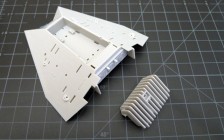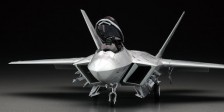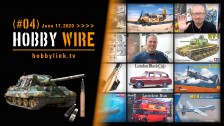Available from HobbyLink Japan
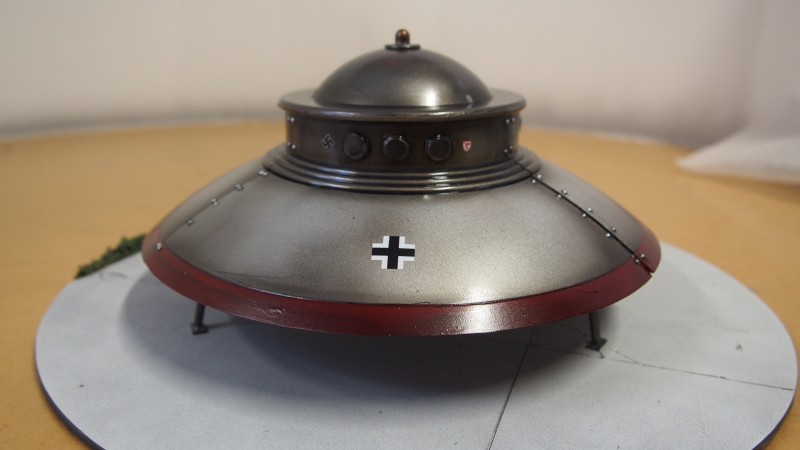
Rain from an Iron Sky.
Wunderwaffe…
The Wonder Weapons that would save the dying Third Reich which in 1943 was forced onto a slow, brutal re-guard which would not end for another two, horrible years. Thanks to the self-absorbed and irrational way that the state was led, and by whom in this time of drawing in and fear, the military, nation, and leadership began to to turn to a succession of increasingly implausible devices to salvage the country from total ruin, and thus give rise to the myths which begat this build.
In truth, the Wunderwaffe did not start off as whack-job myths, but as an outgrowth of a refined German technical tradition which was working on the sort of weapons which we now take for granted, but which were unbelievable at the time. Not just things like the ME262 either, as all sides were working on getting jet turbines into the air (though only the 262 effectively solved the issue of high speed buffeting close to the speed of sound) by adopting swept wings.
Rather the German technical weapons program involved a huge (far too huge) variety of weapons which must have seemed like science fiction when first encountered.
The first Cruise missile in the V1.
The V2 Ballistic Missile
These two weapons are well known, for they went into service and, though they did not turn the tide as the German military hoped, they did do heavy damage and will not easily be forgotten.
However, dig a little deeper into the story and you find some truly fantastical devices.
Example: Guided Missiles
A good example of the sort of weapons in test by the Germans in WWII was the ‘Fritz X’ AKA the Ruhrstahl SD 1400 X.
Designed as an armored deep penetration explosive warhead, this winged warhead was fitted with a variety of dynamic aerofoils which were managed by RC from the launching bomber. Specifically, the Fritz X was controlled by by a Kehl-Strasbourg radio control link, which had an operational range of around 5 miles. Not a truly modern fire-and-forget weapon, this was more like a guided free-fall anti shipping bomb, but it gave air crew a much greater chance of getting a large warhead on target first time.
Closer to a truly guided missile was the Henschel 293, rocket assisted bomb, the later version of which – the Hs 293D – was television equipped so that the bomber itself need not keep eyes on target during flight time.
Last of all, we have the Henschel Hs 117 Schmetterling: Germany’s guided Ground-to-air weapon system.
German UFOs
Though the Germans experimented with everything from tanks to planes, the examples presented above were the sort of weapons (and yes, some were operationally used and witnessed by the Allies above the V-1 and V-2) which helped build the conspiracy theories of Germany developing Flying Saucer style aircraft which were said to be capable (if only the imagination of the fearful) of destroying the thousand bomber raids which were regularly pummelling cities by 1944.
The beginning of this ‘Nazi UFO’ myth may well be found in the phenomena of the ‘Foo Fighters’
Foo Fighter.
On the night of the 14th November 1944, a Bristol Beaufighter crew spotted a series of red and orange lights flying level to them along their port as they followed the Rhine River homewards and passing Strasbourg. The Pilot, Edward Schlueter, described them as eight to ten bright red and orange objects over his port wing, and easily keeping pace with his craft. As they did not appear on air or ground radar, Edward decided to take a closer look and turned towards the formation, at which point they vanished.
Possibly an optical illusion? Certainly. However, the story of that night’s encounter spread like wildfire through allied aircrews as Foo Fighters – possibly a corruption of Faux, meaning false and a reference to the popular US comic “Smokey Stover” “foo fighters” concept.
As reports continued to come in, and began mingling with the age old aerial myth of the Gremlins, the ‘capabilities’ of these, presumably, German Foo Fighters began to improve. From an initial 200 MPH, they soon began easily outpacing allied bombers and fighters, and were reported to have downed several bombers – though, of course no single reliable source – in service, our out – ever recorded such a kill.
Not that this mattered. All that was important was that the aircrews were seeing things, or at the very least thought they were.
Pilots of this period were undoubtedly professional – they had to be. Yet, they were also under levels of stress that one can barely imagine today: in arms of the service that might suffer high casualties in an environment which was more brutal and unforgiving even than the depths of the ocean – on the very fringes of an ice-bound heaven, a fall from which would bring a psychologically mortifying death, should the fighters find you.
US Air Force and RAF psychologists had no clear answer. Battle fatigue could not explain all the sightings yet the escalating nature of the testimonies also indicated a form of mass hallucination, as each crew’s experience further reinforced the overall experience.
Luftwaffe UFOs
Eventually, the experience begat the myth, and in the years following WWII, when the Flying Saucer Craze hit hard, stories of German UFOs began to surface in the contactee community.
Early speculations on the subject were limited to the sort of technologies which were seized by allied troops at the end of the war, such as the Horten-Ho 229, the shape of which reminds me of the objects seen by Kenneth Arnold in 1947.


However, as these things go, few things stay secret for long. With aircrews sharing their Foo Fighter experiences, and the troops who came across craft like the Horten simply talking about secret tech being spirited away, it did not take long for the world of military technology to crash into the contactee realm.
In 1950 in the Italian newspaper ‘Il Giornale d’Italia,’ Prof. Giuseppe Bellazzo, former Italian Minister of National Economy, wrote that it claimed that “types of flying discs were designed and studied in Germany and Italy as early as 1942.”
Over the years, many stories have been told, but of the objects which have been attached to the Nazi UFO myth, none has stirred up more interest than the one known colloquially as Die Glocke (The Bell) – claims about the existence of which originated in the writings of conspiracy writer Igor Witkowski.
Witkowski’s book ‘Prawda O Wunderwaffe’ (The Truth About Wonder Weapons) calls it “The Nazi-Bell” and that it was first discovered in transcripts from the interrogation of former Nazi SS Officer Jakob Sporrenberg, which allegedly was part of an experiment carried out by German scientists known as Der Riese (“The Giant”) near the Wenceslaus mine and close to the Czech border.
No supporting material other than Witkowski’s work exists for the device but it has become so closely tied to the Nazi UFO myth that it has become the ‘poster child’ for post-war German ‘Technollusionism’.


Described as everything from an anti-gravity interceptor to ‘Hitler’s time machine,’ this device is the perfect emblem of the conspiracy movement. Poorly defined, existing in rumor alone, yet tied to places and people who really did exist, such as Sporrenberg and the Der Riese.
It is a ghost and a reality at the same time: a thing which cannot be proven to the skeptic, and a thing which need not be proven to the believer.
Plus, as perverted as it sounds, there is something undeniably appealing about Nazi UFOs, for reasons which pass my understanding. Perhaps it is a desire to see the war as something fought against something truly monstrous and inhuman – for to recognize that the foe was no more or less than ‘human’ is still disquieting; even in this age of worldwide terror…
The Build


Control Panels
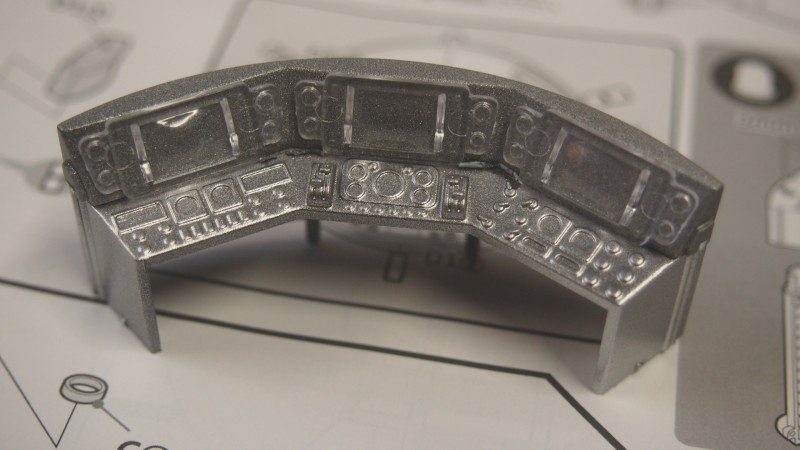

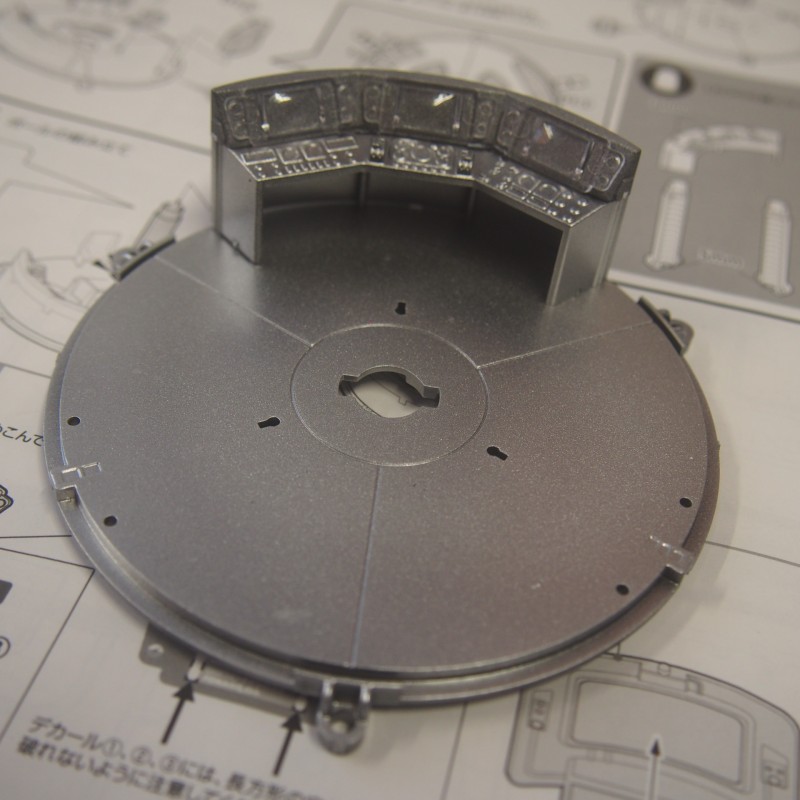

Control Deck


Space chairs!
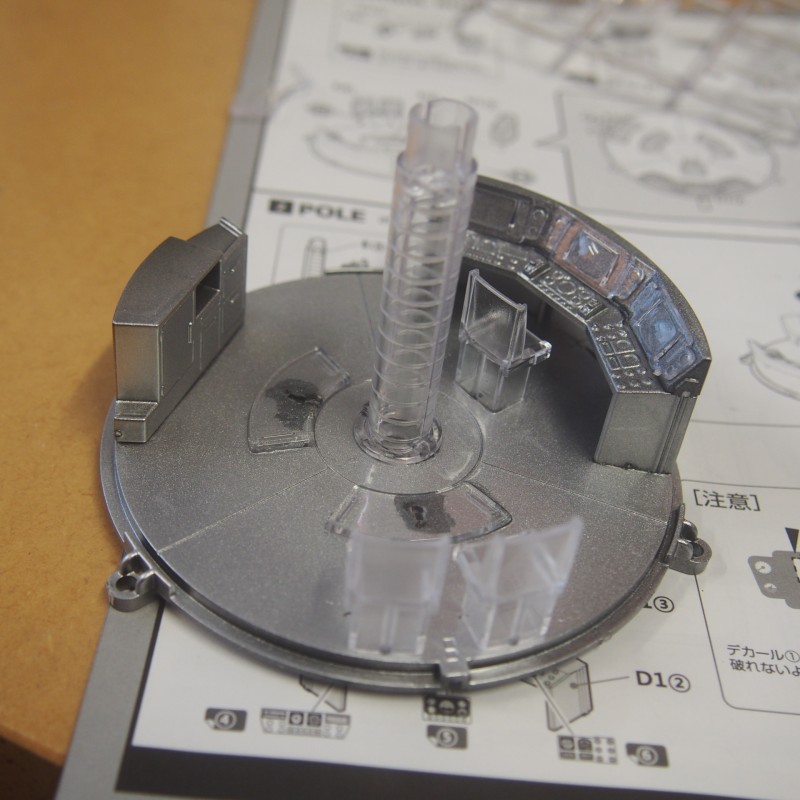

Is this a Nazi UFO or the Tardis? At least they have a place to put the crockery…
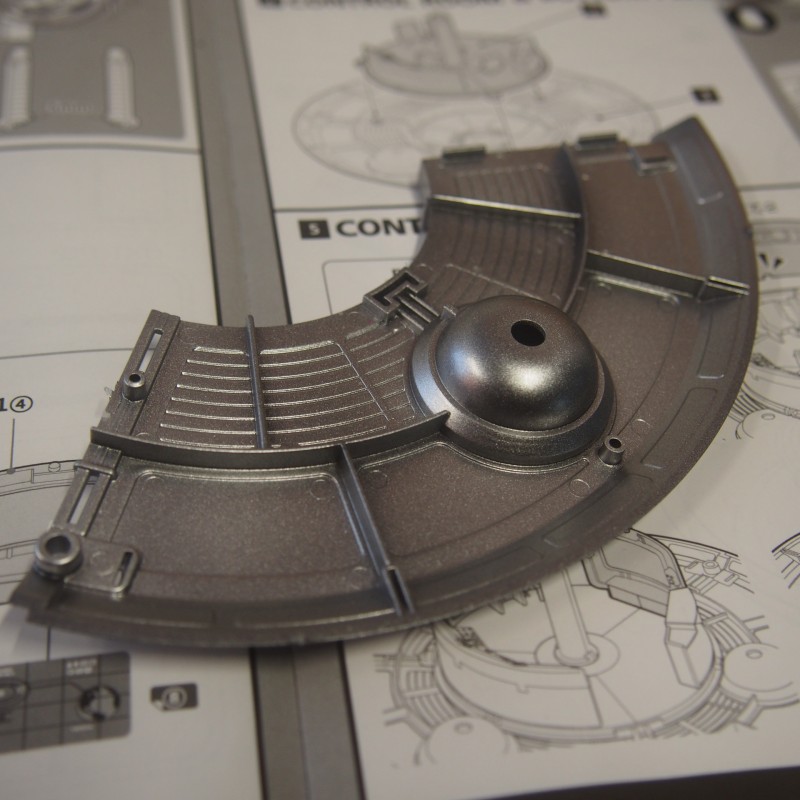

The Anti gravity Deelies. Three times the power output of the older MkIII Widgets…


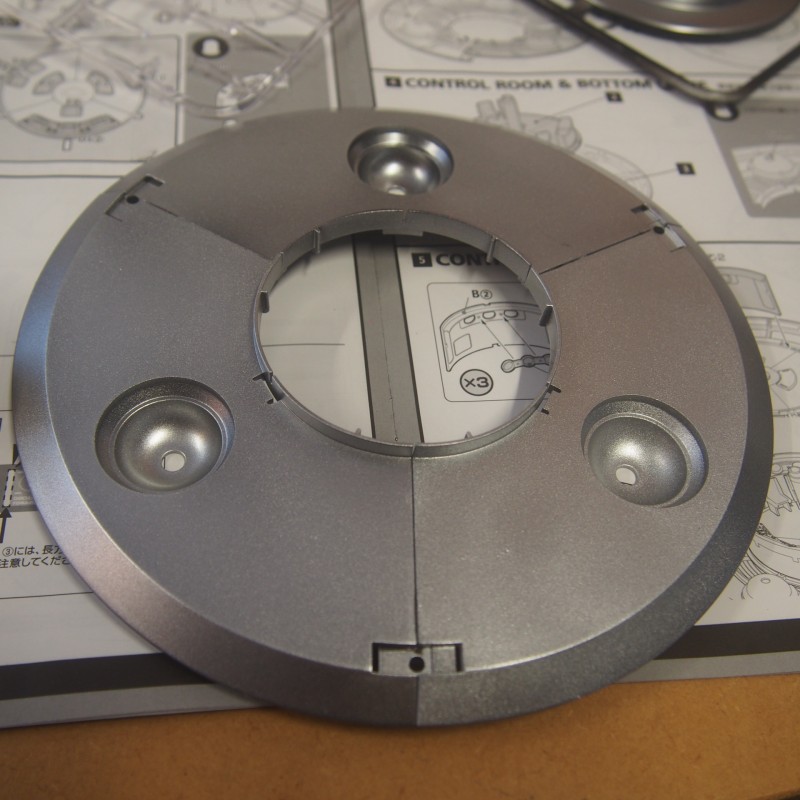

The construction is as simple as can be imagined.


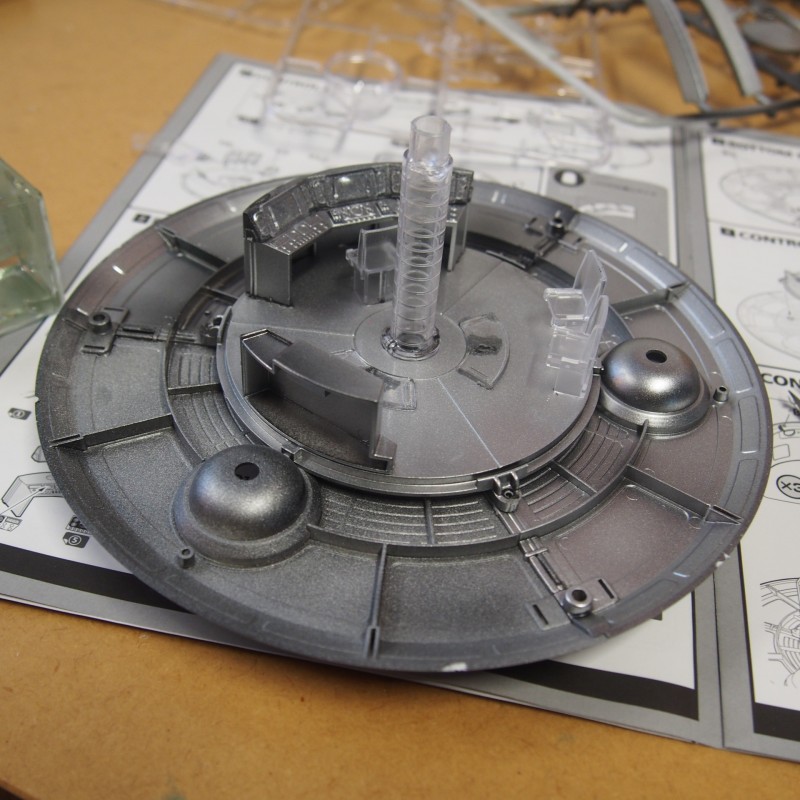

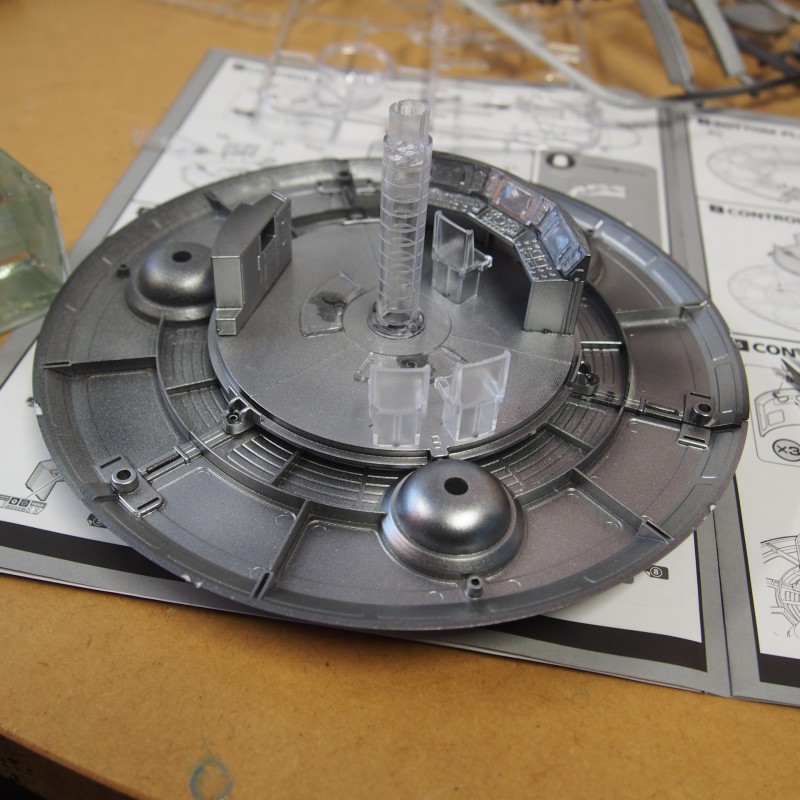

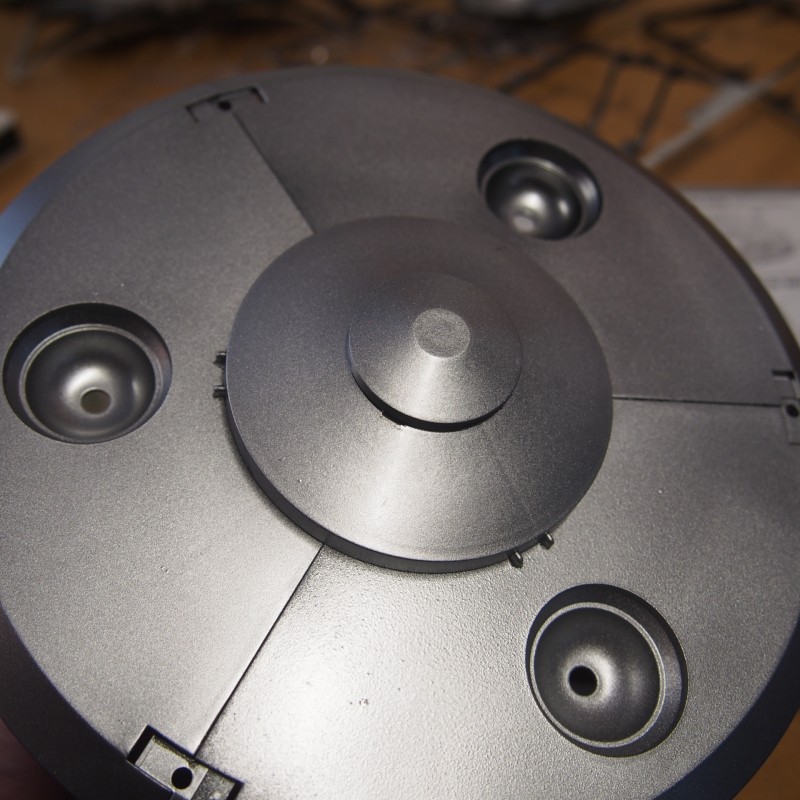

Underside of the Hull


Main Screen Decal
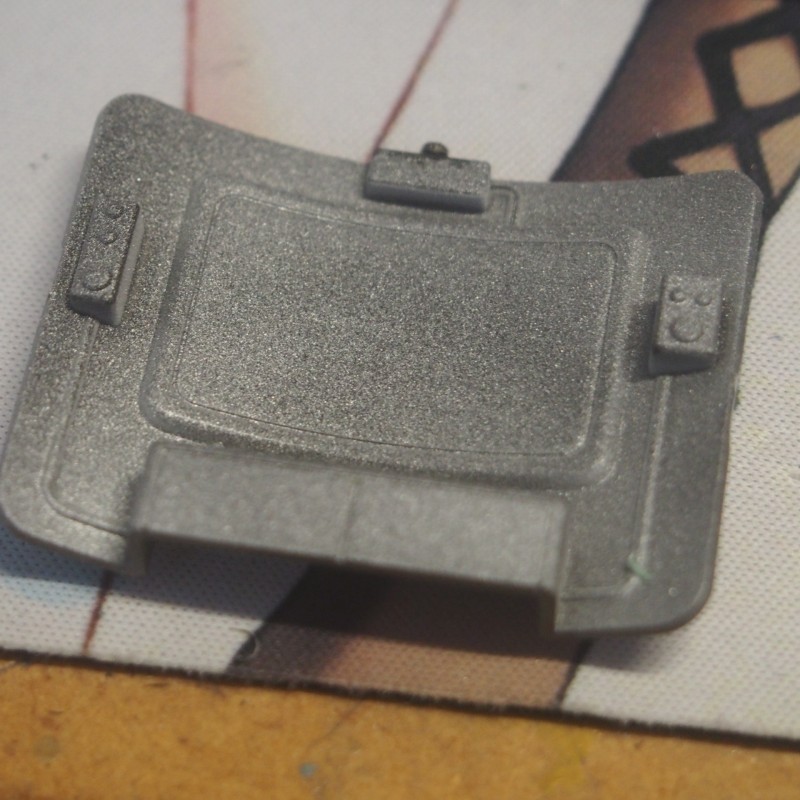



The walls and roof are detachable so that the interior can be displayed
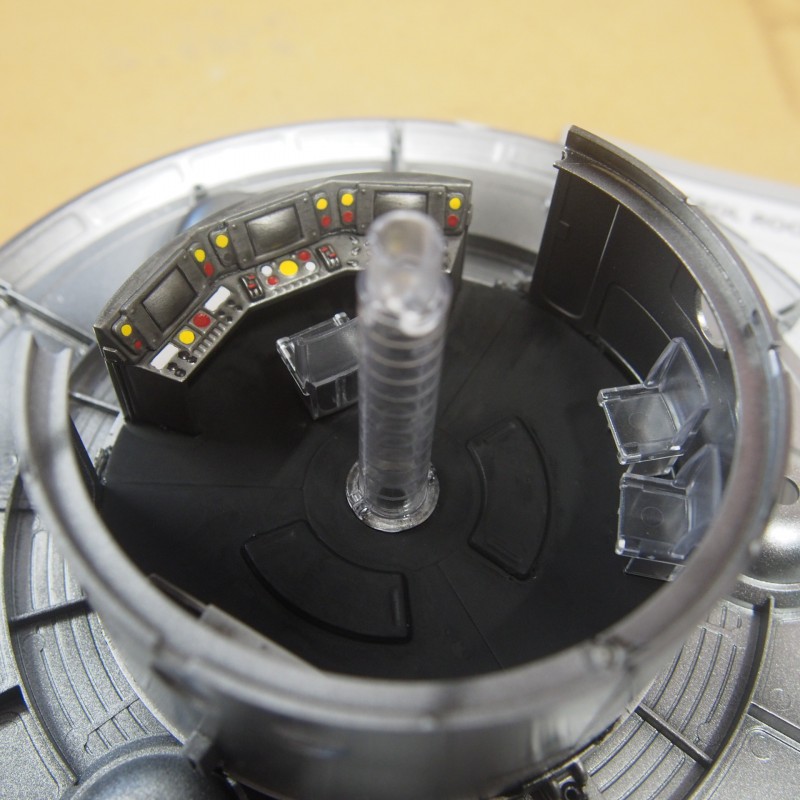

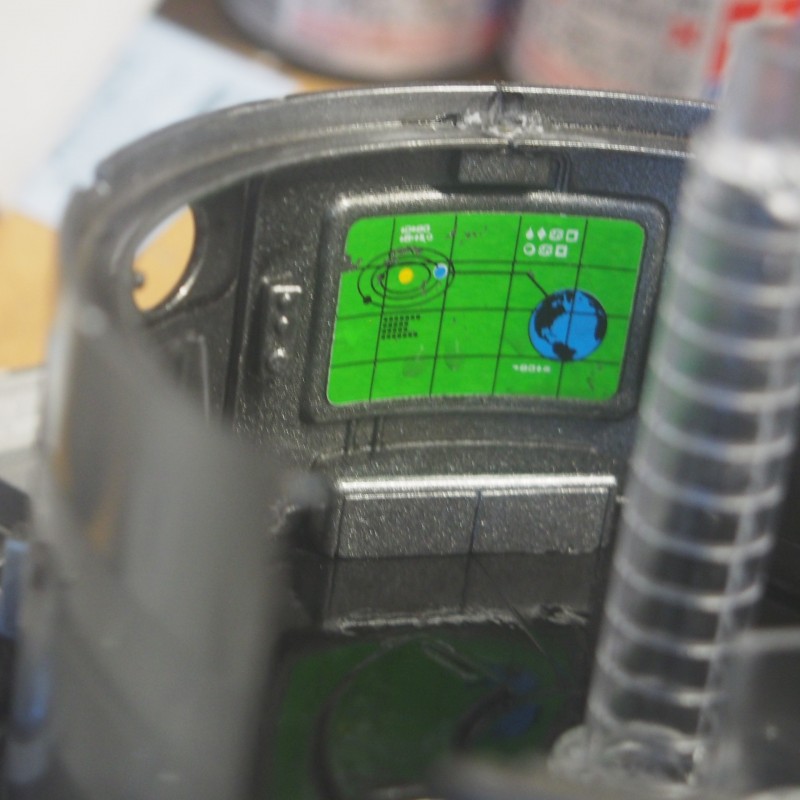



The decals for the sub-screens are very fragile and need softener to get them to lie flush on the convex moldings
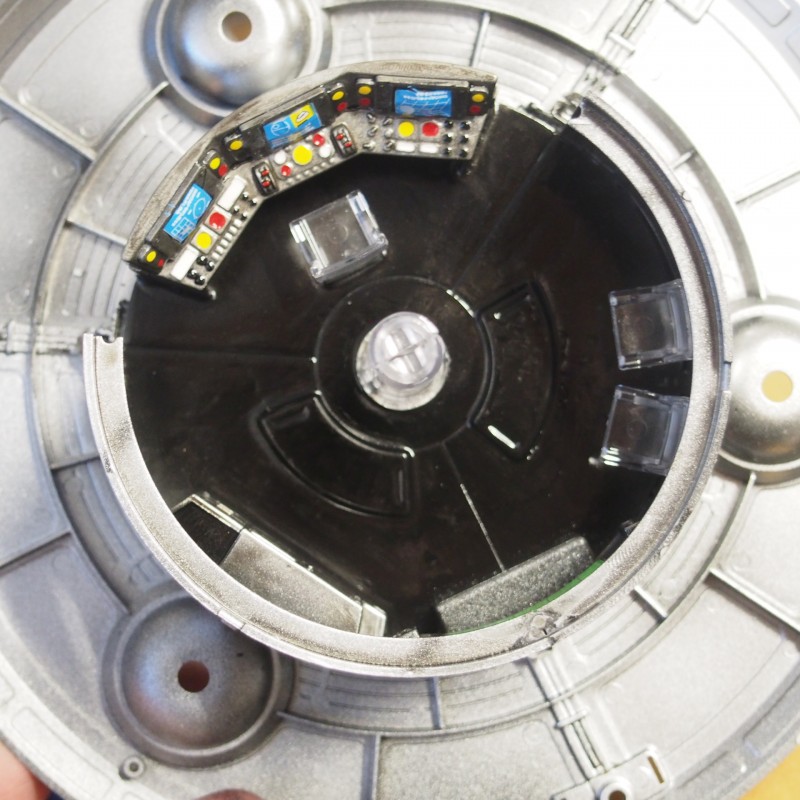

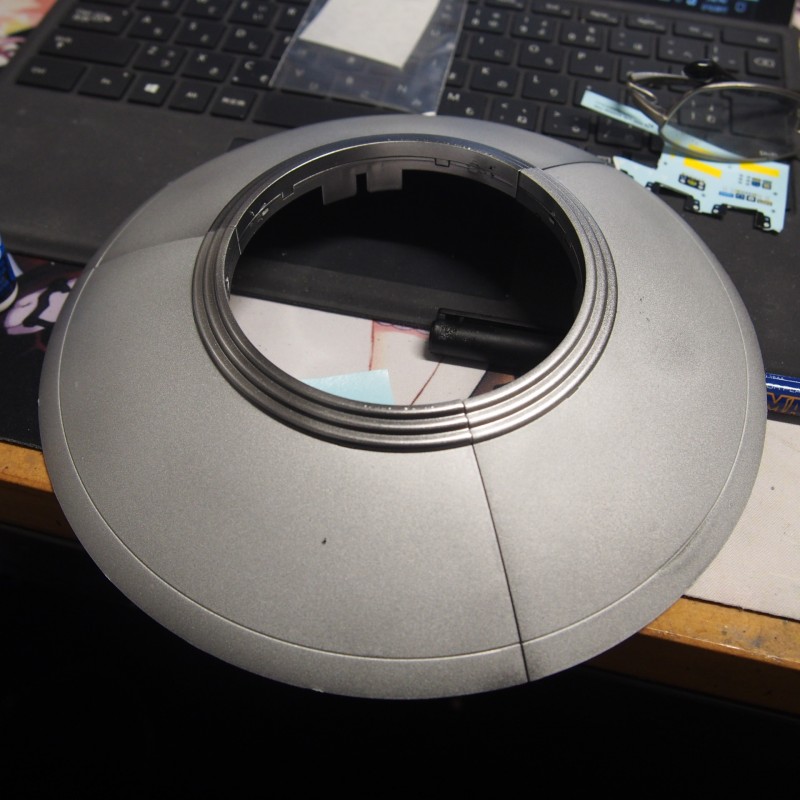



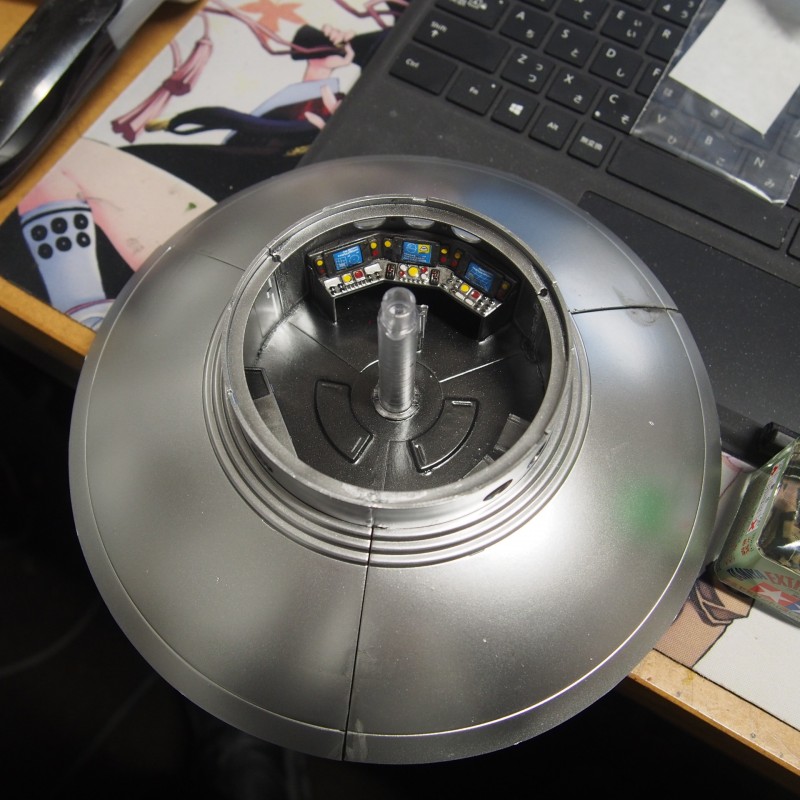

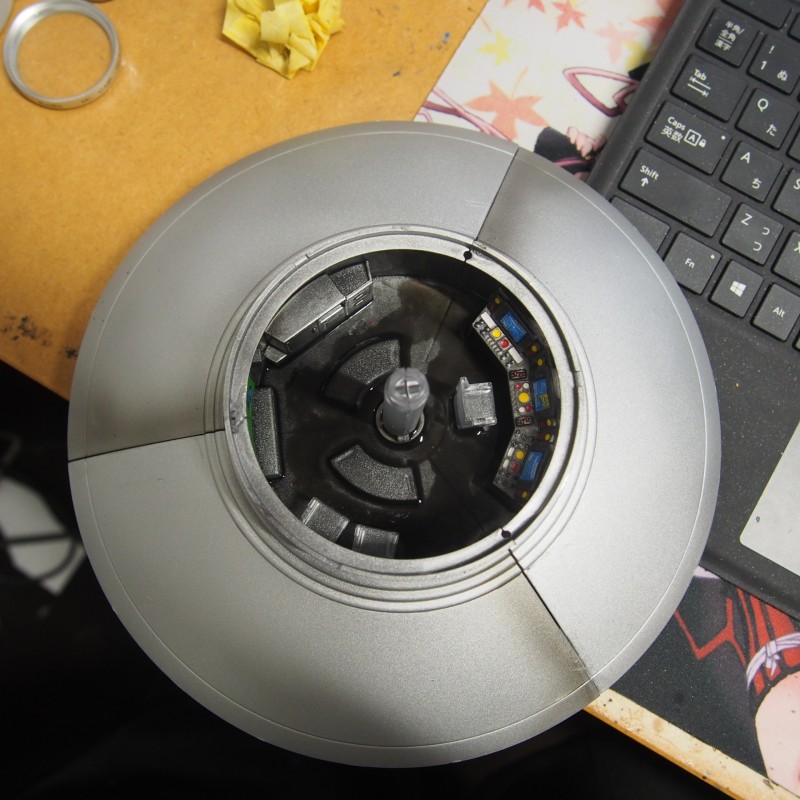

The hull needs careful fitting, despite its simplicity. If you pre-paint, you are likely to run into some issues with fitting, but these are easily overcome with a little trimming, as the kit has loads of register points.
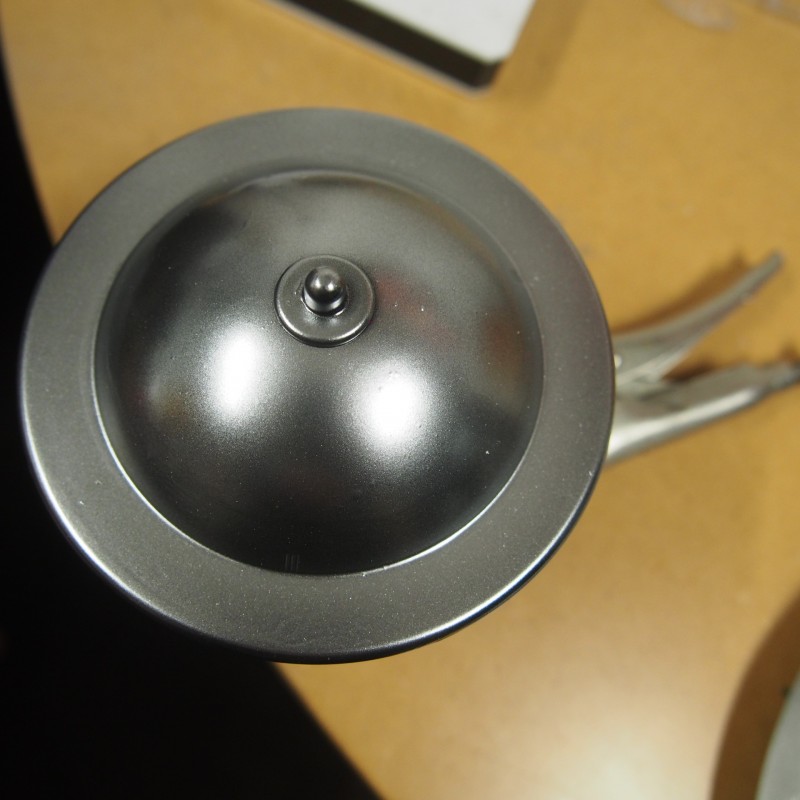

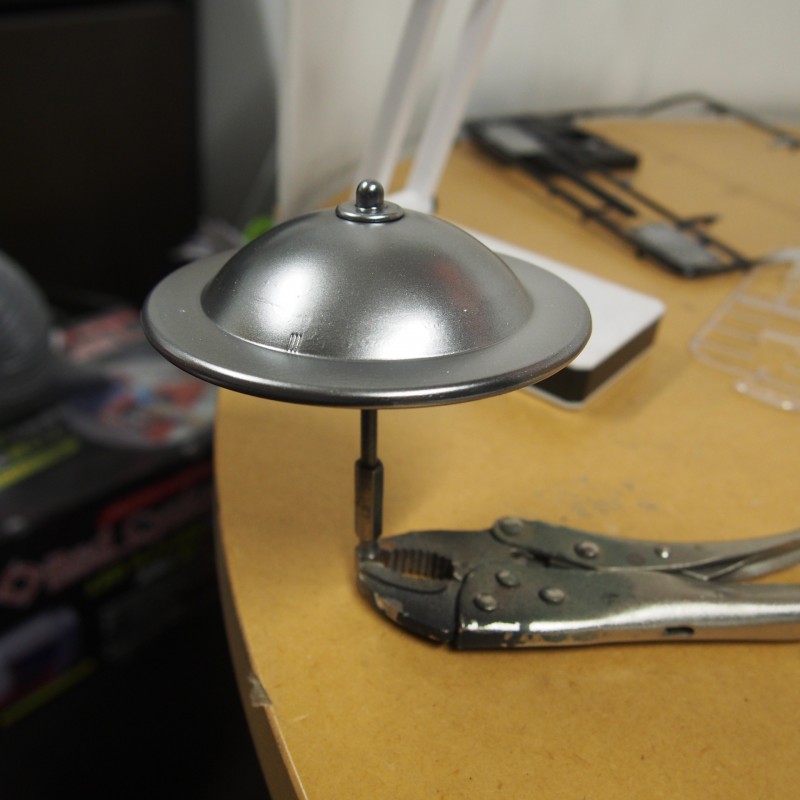

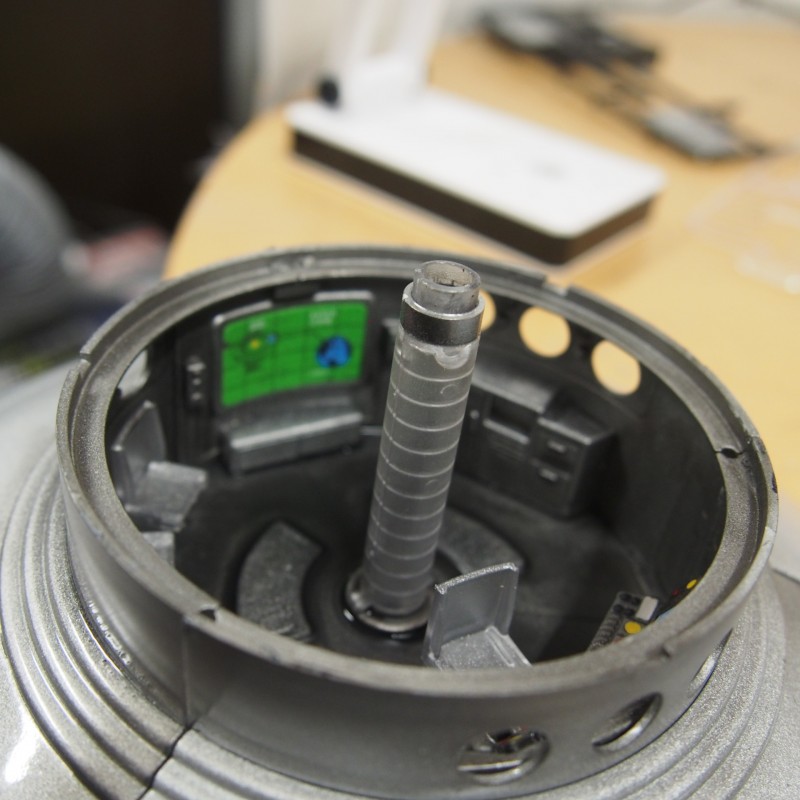

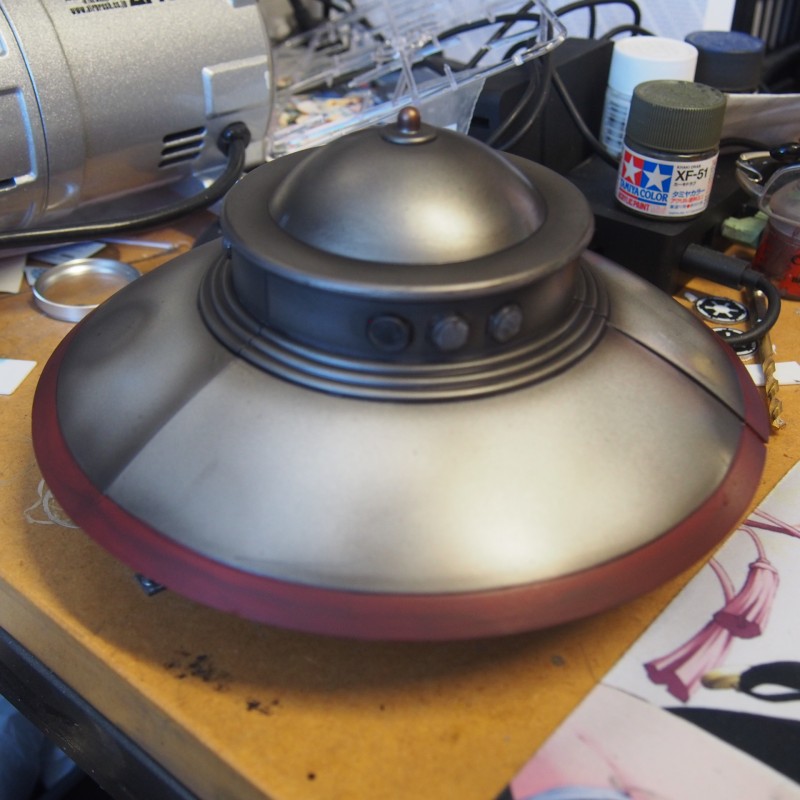

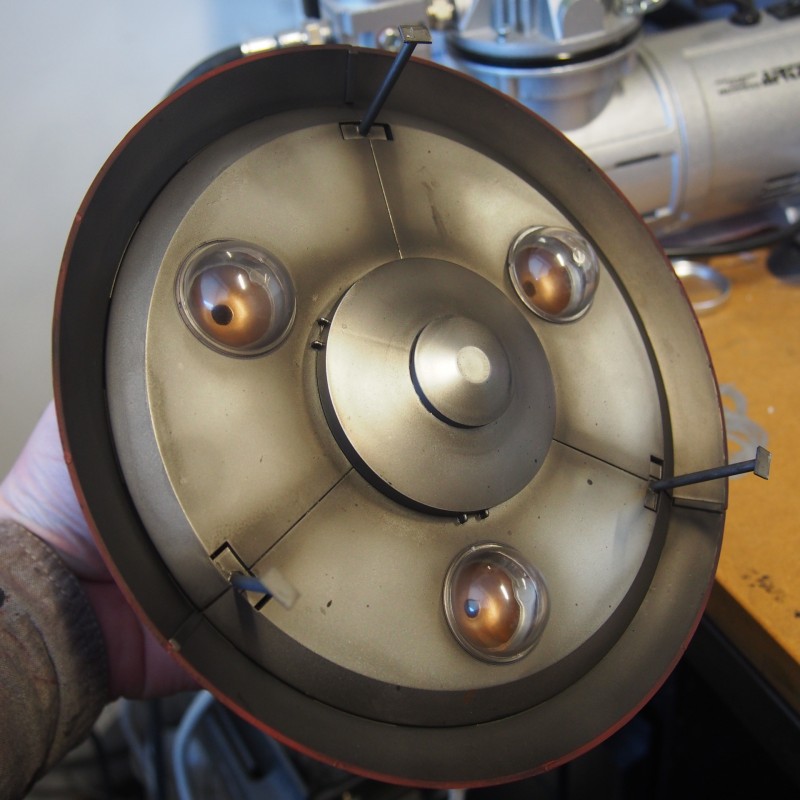

I added the landing gear myself. The Adamski saucer is said to have landed on its three engine domes, but I wanted something more traditional.
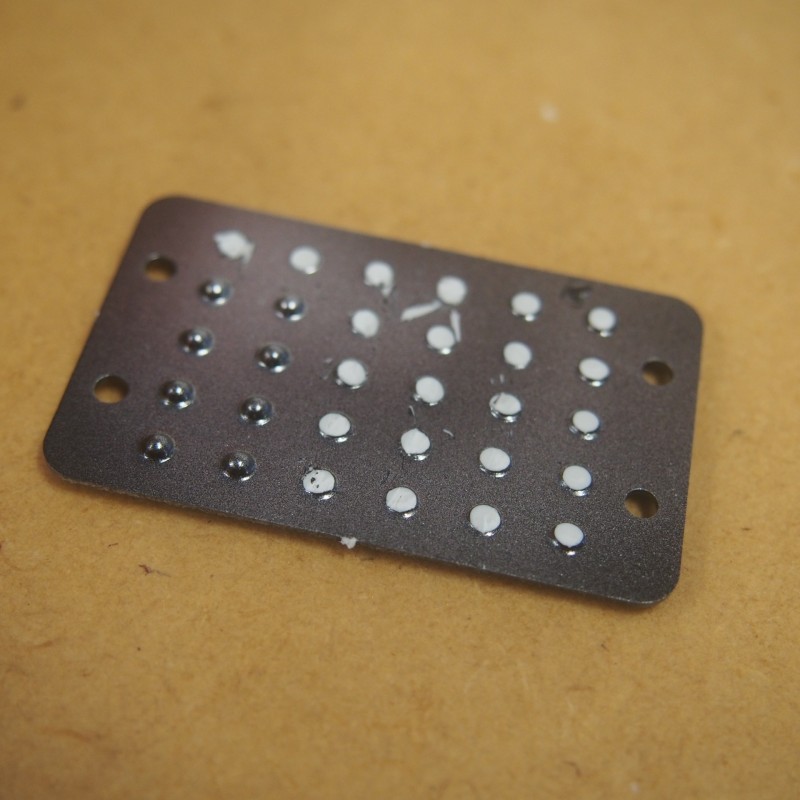

Riviets! Lots and lots of rivets. Just spray them, cut them and go nuts!
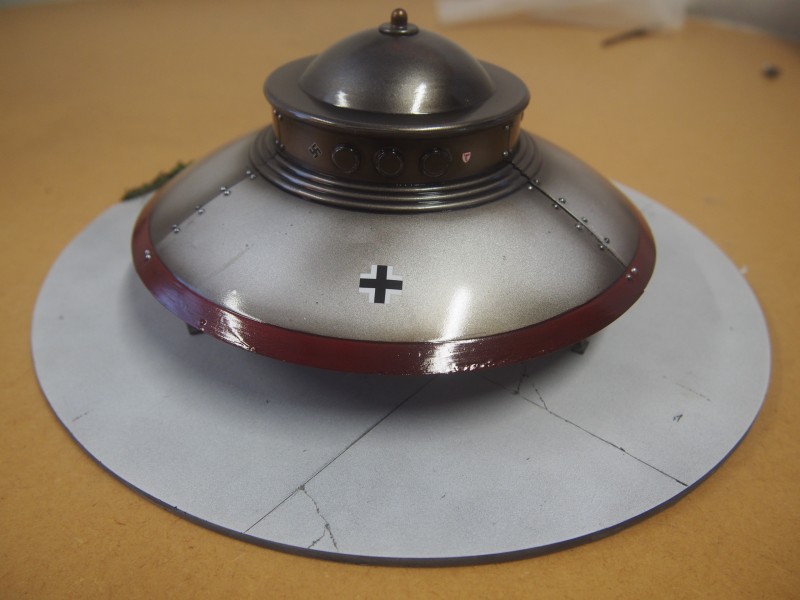



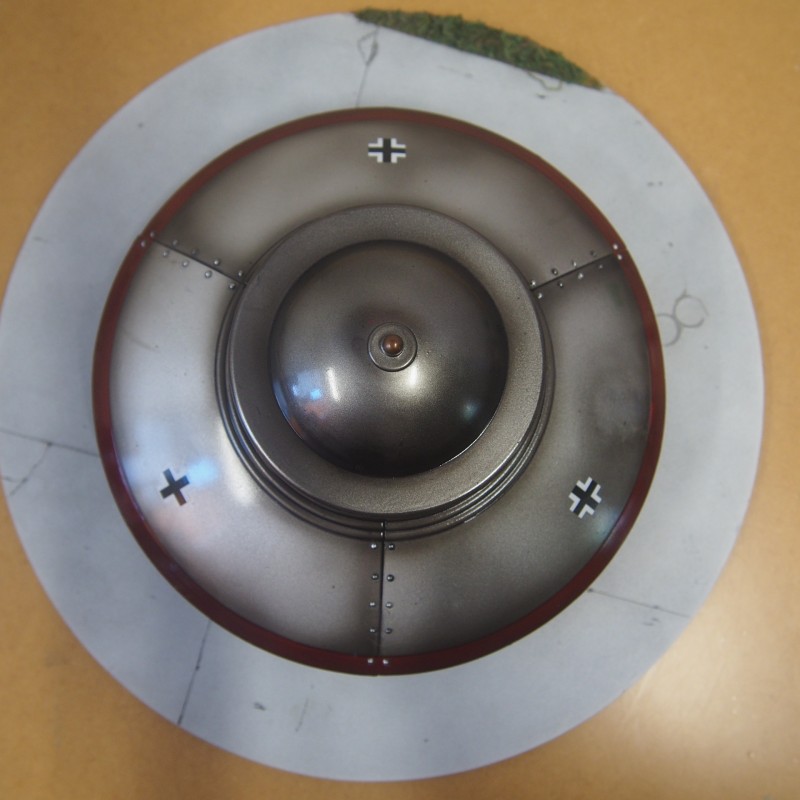

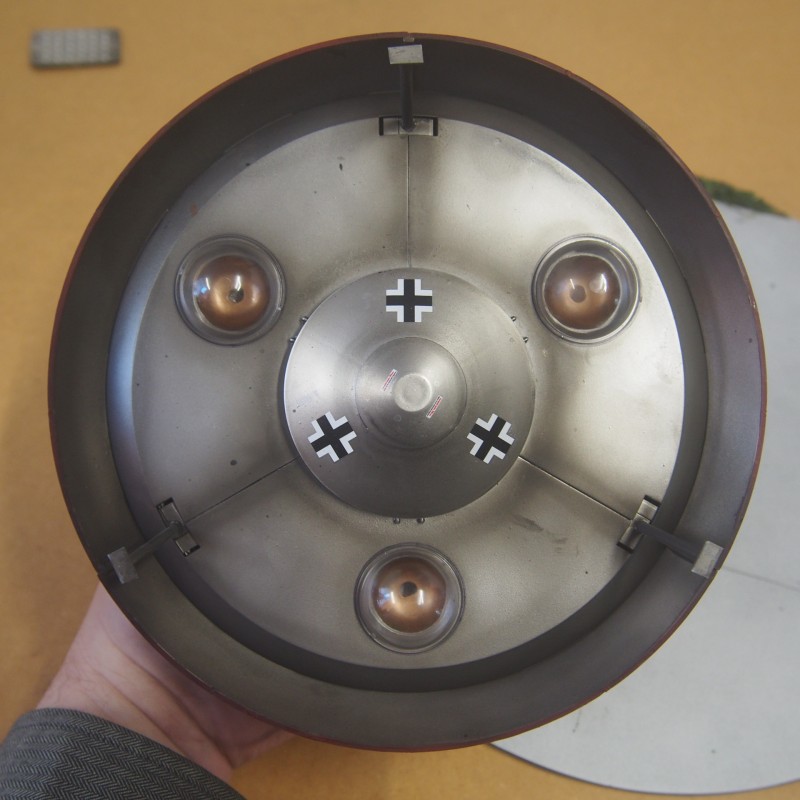

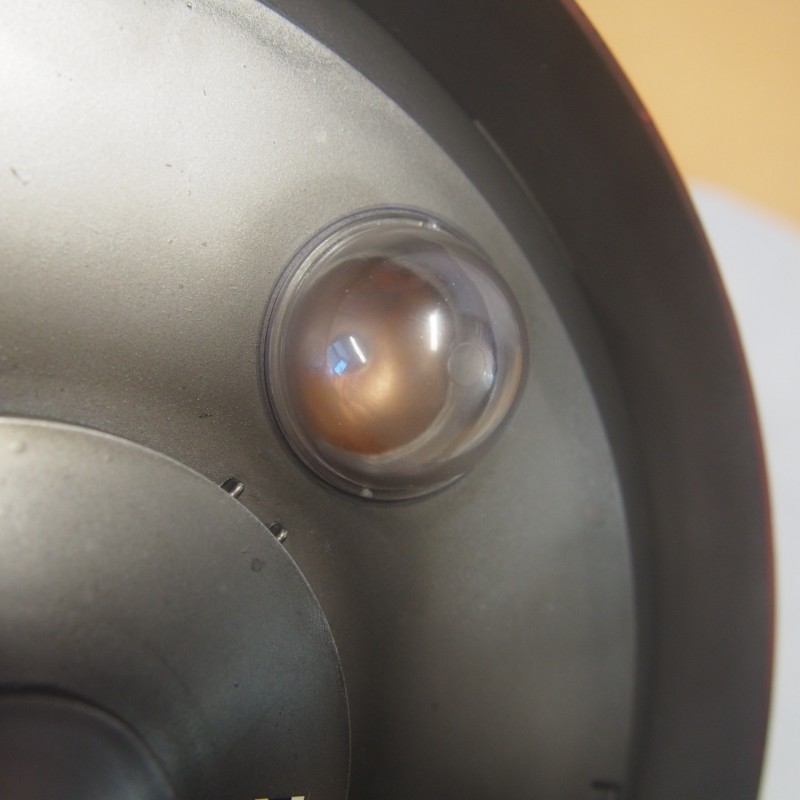








Conclusions.
There are a number of mods I will be making to this in the long term, not least will be a Porche turret from a King Tiger Tank and/or some side mounted 20mm cannons.
However, the basic look is sound as a pound.
Makes me want to build some more German UFOs (and an RAF, interceptor from the Anderson series, if I can find a 1/48 scale kit)… As there are a fair few kits out there to be had.
Speaking of which… http://hlj.com/product/FNSSF-02 😀
There is this 1/72 overtly German version of the Adamski design, which looks nice, pre-fitted with air to ground weapons: http://hlj.com/product/WAVHH-42
Or you could go classic 70s and dress up this model from the classic ‘Invaders’ series. Again, based on the Adamski model: http://hlj.com/product/ATLAMC1006
Or, you could just be hungry… http://hlj.com/product/NSS23437
Or perhaps I should just do a Round 2 1/48 Eagle in RAF colours and do it that way.
Either way, it will do for me. A simply, lovely little kit. Well made and clean, which both commemorates one of the key moments in UFO lore and offers some real opportunities for conversions (Maschinen Krieger, for example? Now *that’s* a thought….).
Strange that such a simple thing would end up being my favorite model in years, but there we are.
Dr. Robodaz.


